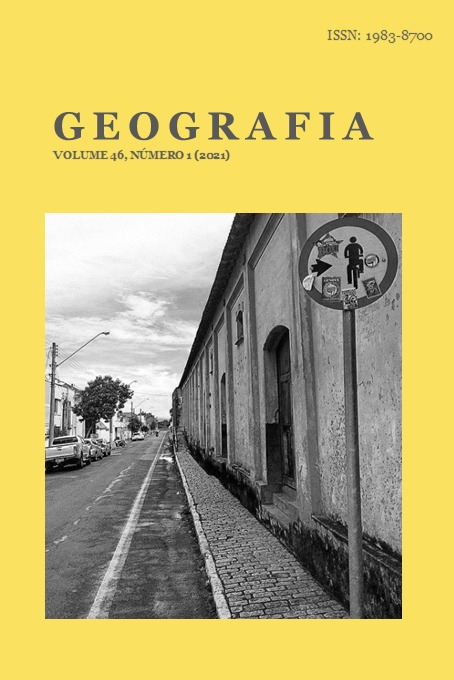ANÁLISE DAS MUDANÇAS DO USO E COBERTURA DO SOLO ENTRE 1985 E 2018 DA BACIA HIDROGRÁFICA DO RIO JUNDIAÍ-MIRIM – JUNDIAÍ/SÃO PAULO
DOI:
https://doi.org/10.5016/geografia.v46i1.15756Resumo
A bacia do rio Jundiaí-Mirim responde por 95% do abastecimento público de Jundiaí, e vem sofrendo com a expansão da agropecuária e da urbanização nas últimas décadas, o que pode impactar a disponibilidade de água. Este trabalho analisou as mudanças no uso e cobertura do solo na bacia, nos anos de 1985, 1995, 2005 e 2018, bem como as dinâmicas de supressão e regeneração de florestas entre 1985 e 2018, com vistas a compreender os vetores de alteração da paisagem. O estudo utilizou dados secundários do MapBiomas para calcular áreas por classe de interesse, posteriormente analisadas estatisticamente. O resultado evidenciou a predominância da agropecuária, que ocupa hoje 61,57% do território, bem como uma expansão acentuada da urbanização, que cresceu 97% entre 1985 e 2018. As florestas ocupam hoje 26,79% da área estudada e 63,81% das Áreas de Preservação Permanente estão ocupadas por usos antrópicos. Entre 1985 e 2018, houve perda líquida de 339 hectares de florestas, sendo a agropecuária o principal vetor de desmatamento. Conclui-se pela necessidade de aprimorar os mecanismos de planejamento e gestão ambiental no território.
Downloads
Publicado
Edição
Seção
Licença
Os autores mantém os direitos autorais e concedem à GEOGRAFIA o direito de primeira publicação, com os artigos simultaneamente licenciados sob a Licença Creative Commons BY 4.0, que permite o compartilhar e adaptar os artigos para qualquer fim, desde que sejam dados os créditos apropriados e as disposições dos direitos de imagem, de privacidade ou direitos morais. Outras atribuições legais podem ser acessadas em: https://creativecommons.org/licenses/by/4.0/legalcode.en.
Geografia, Rio Claro, SP, Brasil - eISSN 1983-8700 está licenciada sob a Licença Creative Commons BY 4.0





